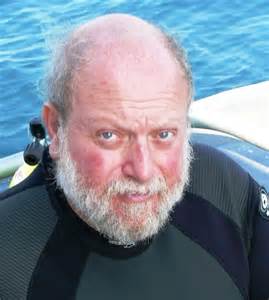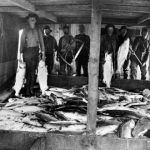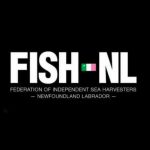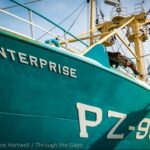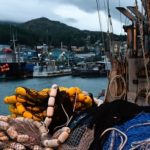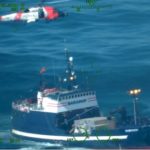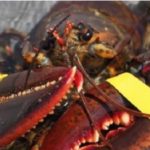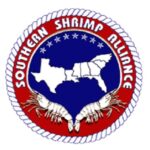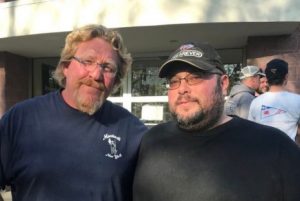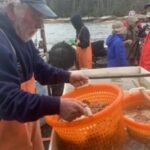Monthly Archives: July 2016
Restrictions on tap for southern New England lobster fishery
 New restrictions are on tap for the region’s historic lobster fishery, which is grappling with an unprecedented decline. Scientists have said lobsters off southern Massachusetts, Rhode Island and Connecticut have declined in the face of the warming ocean. The Atlantic States Marine Fisheries Commission is considering ways to help preserve the species, and a report from the commission says one way to preserve lobsters could be to increase the minimum harvesting size. The commission’s lobster board might take action on the issue Thursday. “The biggest challenge I see is trying to establish an appropriate goal to manage the fishery in the face of what the scientists are telling us is the decline caused by ocean warming,” said Dan McKiernan, a member of the lobster board. Read the rest here 15:43
New restrictions are on tap for the region’s historic lobster fishery, which is grappling with an unprecedented decline. Scientists have said lobsters off southern Massachusetts, Rhode Island and Connecticut have declined in the face of the warming ocean. The Atlantic States Marine Fisheries Commission is considering ways to help preserve the species, and a report from the commission says one way to preserve lobsters could be to increase the minimum harvesting size. The commission’s lobster board might take action on the issue Thursday. “The biggest challenge I see is trying to establish an appropriate goal to manage the fishery in the face of what the scientists are telling us is the decline caused by ocean warming,” said Dan McKiernan, a member of the lobster board. Read the rest here 15:43
Back in the game: boat building returns to Harbour Grace
 With a crack of a champagne bottle on the hull, a longtime Newfoundland fishing family launched a brand new boat on July 28. Roy Careen of Point Lance had the vessel built for the skipper, his son Christopher. The launch of the Nellie C., named for both Roy’s mother and his wife’s mother, was a special moment for the Careens but an even prouder moment for the owners of Harbour Grace Ocean Enterprises (HGOE). The last vessel built in the Harbour Grace facility was back in 2005. General Manager of HGOE, Paul Lannon, said he and his group took over the business in 2013 and right away saw opportunities to get into boat building. “There’s a growing demand for new fishing vessels of various sizes because of changes to regulations in the industry and people fishing different species, so yards are very busy throughout the Maritimes and Atlantic Canada,” said Lannon. Read the rest here 12:46
With a crack of a champagne bottle on the hull, a longtime Newfoundland fishing family launched a brand new boat on July 28. Roy Careen of Point Lance had the vessel built for the skipper, his son Christopher. The launch of the Nellie C., named for both Roy’s mother and his wife’s mother, was a special moment for the Careens but an even prouder moment for the owners of Harbour Grace Ocean Enterprises (HGOE). The last vessel built in the Harbour Grace facility was back in 2005. General Manager of HGOE, Paul Lannon, said he and his group took over the business in 2013 and right away saw opportunities to get into boat building. “There’s a growing demand for new fishing vessels of various sizes because of changes to regulations in the industry and people fishing different species, so yards are very busy throughout the Maritimes and Atlantic Canada,” said Lannon. Read the rest here 12:46
Chatham Coast Guard crew medevacs injured fisherman
 Coast Guard Station Chatham crewmembers medevaced an injured fisherman Saturday night near the entrance of Great Round Shoal. A person aboard the fishing boat Illusion, which was about 30 miles east of Nantucket en route to its homeport of New Bedford, contacted Coast Guard watchstanders Saturday and reported a crewmember suffered a severe hand laceration and required immediate medical attention. A response boat crew from Coast Guard Station Chatham launched with two fire department EMTs aboard to rendezvous with Illusion and aid the fisherman. The Coast Guard and fishing boat met at the entrance of Great Round Shoal where the injured fisherman was transferred aboard the Coast Guard boat. The EMTs provided the man care while he was transported to Saquatucket Harbor to awaiting emergency medical services personnel. Link 12:05
Coast Guard Station Chatham crewmembers medevaced an injured fisherman Saturday night near the entrance of Great Round Shoal. A person aboard the fishing boat Illusion, which was about 30 miles east of Nantucket en route to its homeport of New Bedford, contacted Coast Guard watchstanders Saturday and reported a crewmember suffered a severe hand laceration and required immediate medical attention. A response boat crew from Coast Guard Station Chatham launched with two fire department EMTs aboard to rendezvous with Illusion and aid the fisherman. The Coast Guard and fishing boat met at the entrance of Great Round Shoal where the injured fisherman was transferred aboard the Coast Guard boat. The EMTs provided the man care while he was transported to Saquatucket Harbor to awaiting emergency medical services personnel. Link 12:05
PETA wishes Warren Sapp well after shark attack, sends (delicious cruelty-free) fake lobster
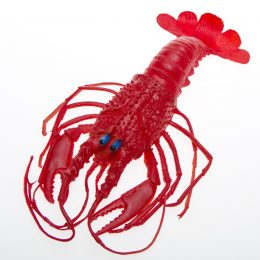 Warren Sapp was bitten by what appeared to be a nurse shark while hunting lobster off the Florida Keys on Wednesday. The former University of Miami and NFL star will be getting at least one get-well card. And some fake lobster. People for the Ethical Treatment of Animals, best known as PETA, said it was not only sending its best wishes to Sapp via a card, but would also send him some “delicious cruelty-free vegan lobster” for his enjoyment. Also, PETA appears fond of football puns. “We heard about your interception of a defensive shark’s lobster dinner,” PETA wrote in its response to Sapp according to an email sent to the Miami Herald. “We wanted to pass along some delicious cruelty-free vegan lobster in the hope that it’s a winner with you and yours. Read the rest here, and eat more lobster! 11:15
Warren Sapp was bitten by what appeared to be a nurse shark while hunting lobster off the Florida Keys on Wednesday. The former University of Miami and NFL star will be getting at least one get-well card. And some fake lobster. People for the Ethical Treatment of Animals, best known as PETA, said it was not only sending its best wishes to Sapp via a card, but would also send him some “delicious cruelty-free vegan lobster” for his enjoyment. Also, PETA appears fond of football puns. “We heard about your interception of a defensive shark’s lobster dinner,” PETA wrote in its response to Sapp according to an email sent to the Miami Herald. “We wanted to pass along some delicious cruelty-free vegan lobster in the hope that it’s a winner with you and yours. Read the rest here, and eat more lobster! 11:15
Retired trawler to be first artificial reef piece
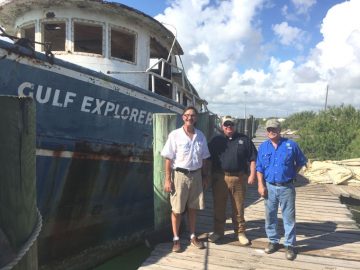 An artificial reef project aimed at boosting red snapper populations in South Texas waters hit a major milestone earlier this week with the issuance of a final permit from the U.S. Army Corps of Engineers. The recipient was Friends of RGV Reef, which may now proceed with sinking the reef’s first vessel. Gary Glick, the group’s president, said the retired trawler Gulf Explorer will be sent to the bottom in state waters 13.75 nautical miles north of the South Padre Island jetties and eight nautical miles offshore, likely next month. The group got a good deal on the 30-ton shrimper — plus a retired ocean-going tugboat also slated for sinking — from Billy Kennon of Marine Salvage & Services Inc. in Port Isabel, Glick said. Read the story here 10:57
An artificial reef project aimed at boosting red snapper populations in South Texas waters hit a major milestone earlier this week with the issuance of a final permit from the U.S. Army Corps of Engineers. The recipient was Friends of RGV Reef, which may now proceed with sinking the reef’s first vessel. Gary Glick, the group’s president, said the retired trawler Gulf Explorer will be sent to the bottom in state waters 13.75 nautical miles north of the South Padre Island jetties and eight nautical miles offshore, likely next month. The group got a good deal on the 30-ton shrimper — plus a retired ocean-going tugboat also slated for sinking — from Billy Kennon of Marine Salvage & Services Inc. in Port Isabel, Glick said. Read the story here 10:57
The unusual, mysterious American eel
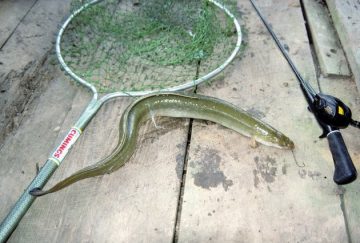 I recently watched a man fishing in the Arkansas River at Little Rock who caught an American eel. When he set the hook, the angler was pleased with the reaction. The fish surged away, stripping line against the drag. The man grunted and cranked, smiling all the while. When the 2 1/2-foot fish was finally beached, the man’s demeanor abruptly changed. I doubt he could have been more horror-stricken had he landed a 20-foot anaconda. He dropped his rod, ran to his pickup, extracted a .357 revolver and proceeded to plug the “beast.” When the gun was empty, he smiled again, turned to me and said matter of factly, “I hate @#$+& eels.” For 23 centuries, man speculated on the origin of the eel. Aristotle was convinced that eels rose spontaneously from mud. Roman scholar Pliny the Elder believed young eels came from bits of skin adults rubbed off on rocks. Scandinavians postulated that another fish, the Aalmutter, was the “eel mother,” while Italian fishermen espoused the idea that eels copulated with water snakes. In early America, it was generally assumed that eels arose spontaneously from horse hairs that fell in the water. Read the rest here 10:02
I recently watched a man fishing in the Arkansas River at Little Rock who caught an American eel. When he set the hook, the angler was pleased with the reaction. The fish surged away, stripping line against the drag. The man grunted and cranked, smiling all the while. When the 2 1/2-foot fish was finally beached, the man’s demeanor abruptly changed. I doubt he could have been more horror-stricken had he landed a 20-foot anaconda. He dropped his rod, ran to his pickup, extracted a .357 revolver and proceeded to plug the “beast.” When the gun was empty, he smiled again, turned to me and said matter of factly, “I hate @#$+& eels.” For 23 centuries, man speculated on the origin of the eel. Aristotle was convinced that eels rose spontaneously from mud. Roman scholar Pliny the Elder believed young eels came from bits of skin adults rubbed off on rocks. Scandinavians postulated that another fish, the Aalmutter, was the “eel mother,” while Italian fishermen espoused the idea that eels copulated with water snakes. In early America, it was generally assumed that eels arose spontaneously from horse hairs that fell in the water. Read the rest here 10:02
‘Horrible’ season: North Coast crabbers haul in third of average catch
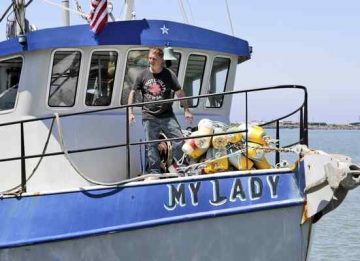 Asked to describe this year’s nine-week commercial Dungeness crab season that should have lasted seven months, Eureka-based crab fisherman Jubal Hall was quite frank. “It was garbage,” he said. “It was horrible.” Hall, 40, is now on his way to Alaska to make up for his losses by fishing on the notoriously dangerous waters of the Bering Sea. While it’s not his preference, Hall said he needs to be able to make up for the financial losses that this year’s dismally short crab season and a second job on the side could not.“I’m broke,” he said. “I’m going up to Alaska because that’s what I’ve got to do to survive.” The Dungeness crab season on California’s North Coast was the hardest hit by toxic algae blooms that have persisted now for over a year straight. Read the story here 09:46
Asked to describe this year’s nine-week commercial Dungeness crab season that should have lasted seven months, Eureka-based crab fisherman Jubal Hall was quite frank. “It was garbage,” he said. “It was horrible.” Hall, 40, is now on his way to Alaska to make up for his losses by fishing on the notoriously dangerous waters of the Bering Sea. While it’s not his preference, Hall said he needs to be able to make up for the financial losses that this year’s dismally short crab season and a second job on the side could not.“I’m broke,” he said. “I’m going up to Alaska because that’s what I’ve got to do to survive.” The Dungeness crab season on California’s North Coast was the hardest hit by toxic algae blooms that have persisted now for over a year straight. Read the story here 09:46
From sea to sale: Fishermen skip processors, go straight to buyers
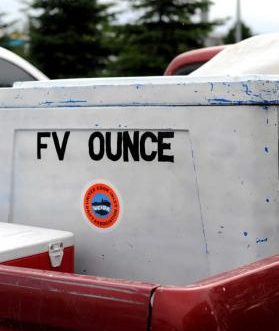 Many of the salmon that wind up in the nets of the fishing vessel Ounce have their buyer’s name on them from the moment they come out of the sea. Out in Cook Inlet, Chuck Lindsay and his business partner Hannah Heimbuch will haul in silver, red and chum salmon from their drift gillnets and sort them for clients in Alaska and elsewhere. Though most of them will cross the dock at one of the area’s processors, about one-fifth will be carefully packed into a cooler in the back of Lindsay’s truck and delivered to his customers’ doors. Lindsay, a co-owner of Kenai Wild Salmon Co. with Heimbuch, has directly marketed part of his catch to customers for the past three years. Once the boat has docked for the day, if he and his partner are not fishing the next day, they will deliver the fish in the morning. The fish is always delivered within 12 hours, he said. Read the rest here 08:11
Many of the salmon that wind up in the nets of the fishing vessel Ounce have their buyer’s name on them from the moment they come out of the sea. Out in Cook Inlet, Chuck Lindsay and his business partner Hannah Heimbuch will haul in silver, red and chum salmon from their drift gillnets and sort them for clients in Alaska and elsewhere. Though most of them will cross the dock at one of the area’s processors, about one-fifth will be carefully packed into a cooler in the back of Lindsay’s truck and delivered to his customers’ doors. Lindsay, a co-owner of Kenai Wild Salmon Co. with Heimbuch, has directly marketed part of his catch to customers for the past three years. Once the boat has docked for the day, if he and his partner are not fishing the next day, they will deliver the fish in the morning. The fish is always delivered within 12 hours, he said. Read the rest here 08:11
Officials are calling off the search for the fishing vessel Alaska Juris.
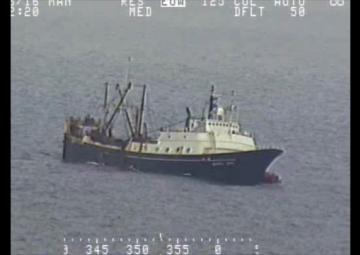 The U.S. Coast Guard released a statement Saturday saying it’s believed that the ship sank in approximately 5,400 feet of water. A problem in the engine room Tuesday led to flooding on board the Alaska Juris, forcing the crew to abandon ship. All 46 crew members were rescued by good Samaritan ships, and there were no injuries. The Coast Guard, the Alaska Department of Environmental Conservation, and the Fishing Company of Alaska coordinated a search of the area northwest of Adak, Alaska, where the fishing vessel Alaska Juris was last seen. There was no sign of the ship. Unrecoverable diesel sheen was located in the search area believed to be from the Alaska Juris. The cause of the fishing vessel Alaska Juris sinking is under investigation. Link 03:15
The U.S. Coast Guard released a statement Saturday saying it’s believed that the ship sank in approximately 5,400 feet of water. A problem in the engine room Tuesday led to flooding on board the Alaska Juris, forcing the crew to abandon ship. All 46 crew members were rescued by good Samaritan ships, and there were no injuries. The Coast Guard, the Alaska Department of Environmental Conservation, and the Fishing Company of Alaska coordinated a search of the area northwest of Adak, Alaska, where the fishing vessel Alaska Juris was last seen. There was no sign of the ship. Unrecoverable diesel sheen was located in the search area believed to be from the Alaska Juris. The cause of the fishing vessel Alaska Juris sinking is under investigation. Link 03:15
LifeWear Donates Manufacturing “Seconds” to Local Rhode Island Fishing Industry
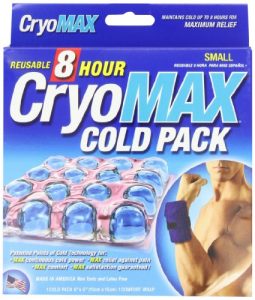 LifeWear Technologies of North Kingstown, the leading supplier of both branded and private label sports medicine products, has found a unique way to support the local fishing industry and reduce waste. LifeWear is now taking high quality CryoMAX ice packs, that for a variety of reasons don’t meet LifeWear’s standards for its consumer products, and donating them to local commercial fishermen. The donation program, first proposed by Congressman Jim Langevin, diverts these ice packs from the local landfill and helps reduce costs for local seafood vendors. The CryoMAX cold packs are manufactured at LifeWear’s factory at Quonset Point and are sold throughout the country in Walmart, CVS and other national chains. Approximately 2 percent of ice packs produced do not pass LifeWear’s stringent quality control standards. These “seconds” may have insufficient pressure, air bubbles, are improperly cut or have other deficiencies that make them unsuitable for consumers products. While perfectly good ice packs, these seconds were usually discarded. Read the story here 15:38
LifeWear Technologies of North Kingstown, the leading supplier of both branded and private label sports medicine products, has found a unique way to support the local fishing industry and reduce waste. LifeWear is now taking high quality CryoMAX ice packs, that for a variety of reasons don’t meet LifeWear’s standards for its consumer products, and donating them to local commercial fishermen. The donation program, first proposed by Congressman Jim Langevin, diverts these ice packs from the local landfill and helps reduce costs for local seafood vendors. The CryoMAX cold packs are manufactured at LifeWear’s factory at Quonset Point and are sold throughout the country in Walmart, CVS and other national chains. Approximately 2 percent of ice packs produced do not pass LifeWear’s stringent quality control standards. These “seconds” may have insufficient pressure, air bubbles, are improperly cut or have other deficiencies that make them unsuitable for consumers products. While perfectly good ice packs, these seconds were usually discarded. Read the story here 15:38
Enviro’s Complain Top Federal Fisheries Official Shouldn’t Be Meddling In Marine Monument Debate
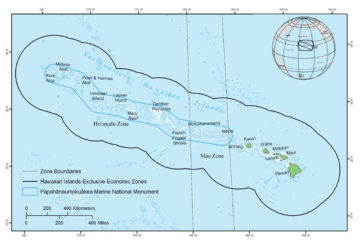 An environmental group has filed a complaint with federal officials over Western Pacific Regional Fishery Management Council Executive Director Kitty Simonds’ role in orchestrating opposition to the proposed expansion of the marine monument around the Northwestern Hawaiian Islands. Marjorie Ziegler, executive director of the Conservation Council for Hawaii, says Simonds is providing “the advocacy and the lobbying campaign” against the proposal to expand Papahanaumokuakea Marine National Monument. “It’s totally inappropriate for Kitty Simonds in her official capacity as executive director of Wespac – a taxpayer, federally funded entity – to play such a prominent role in an aggressive lobbying effort to generate public and political opposition to the proposed expansion,” Ziegler said Friday in an interview. The Conservation Council of Hawaii’s complaint was sent Friday to David Smith, deputy inspector general in the U.S. Department of Commerce’s Office of Inspector General, and Lois Schiffer, general counsel for the National Ocean and Atmospheric Administration. Read the story here 14:40
An environmental group has filed a complaint with federal officials over Western Pacific Regional Fishery Management Council Executive Director Kitty Simonds’ role in orchestrating opposition to the proposed expansion of the marine monument around the Northwestern Hawaiian Islands. Marjorie Ziegler, executive director of the Conservation Council for Hawaii, says Simonds is providing “the advocacy and the lobbying campaign” against the proposal to expand Papahanaumokuakea Marine National Monument. “It’s totally inappropriate for Kitty Simonds in her official capacity as executive director of Wespac – a taxpayer, federally funded entity – to play such a prominent role in an aggressive lobbying effort to generate public and political opposition to the proposed expansion,” Ziegler said Friday in an interview. The Conservation Council of Hawaii’s complaint was sent Friday to David Smith, deputy inspector general in the U.S. Department of Commerce’s Office of Inspector General, and Lois Schiffer, general counsel for the National Ocean and Atmospheric Administration. Read the story here 14:40
NOAA’s Next Big Thing? Ocean Noise – Cracking down on noise-making activities in the ocean. $$$$!
 The ocean has gotten noisier for decades, with man-made racket from oil drilling, shipping and construction linked to signs of stress in marine life that include beached whales and baby crabs with scrambled navigational signals. The United States aims to change that as a federal agency prepares a plan that could force reductions in noise-making activities, including oil exploration, dredging and shipping off the nation’s coast. “We’ve been worried about ocean noise for decades, since the 1970s,” said Richard Merrick, chief science adviser to the National Oceanographic and Atmospheric Administration (NOAA) fisheries agency and a key author of the agency’s more detailed 10-year plan to be released publicly later this year. “The question is, what should we do now?” The draft plan calls for developing noise limits and setting up a standardised listening system. It would also call for the creation of an online archive of noise data that could hold thousands of hours of recordings, which scientists could then cross-reference against data on where marine life congregates. Read the rest here 13:54
The ocean has gotten noisier for decades, with man-made racket from oil drilling, shipping and construction linked to signs of stress in marine life that include beached whales and baby crabs with scrambled navigational signals. The United States aims to change that as a federal agency prepares a plan that could force reductions in noise-making activities, including oil exploration, dredging and shipping off the nation’s coast. “We’ve been worried about ocean noise for decades, since the 1970s,” said Richard Merrick, chief science adviser to the National Oceanographic and Atmospheric Administration (NOAA) fisheries agency and a key author of the agency’s more detailed 10-year plan to be released publicly later this year. “The question is, what should we do now?” The draft plan calls for developing noise limits and setting up a standardised listening system. It would also call for the creation of an online archive of noise data that could hold thousands of hours of recordings, which scientists could then cross-reference against data on where marine life congregates. Read the rest here 13:54
Harpswell Lobstermen Sound Off on Industry, Legacy
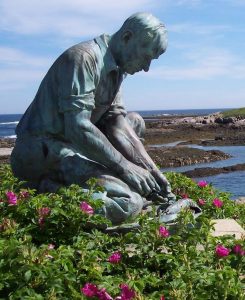 Lobstering brings nearly a half a billion dollars to the shores of Maine, according to the Department of Marine Resources. Harpswell is especially recognized for lobstering, and one local lobsterman estimates that there could be as many as 500 lobstermen and women residing in the town. “I learn something every day and to tell you that I know what the next move with the lobsters would be, I’d be lying,” said Jim Merryman, who has been a lobsterman since he was eight years old. “I’m constantly learning and trying to figure things out, if anybody ever tells you that I’ve got this figured out he’d be lying too.” Read the story here 12:16
Lobstering brings nearly a half a billion dollars to the shores of Maine, according to the Department of Marine Resources. Harpswell is especially recognized for lobstering, and one local lobsterman estimates that there could be as many as 500 lobstermen and women residing in the town. “I learn something every day and to tell you that I know what the next move with the lobsters would be, I’d be lying,” said Jim Merryman, who has been a lobsterman since he was eight years old. “I’m constantly learning and trying to figure things out, if anybody ever tells you that I’ve got this figured out he’d be lying too.” Read the story here 12:16
No sign of abandoned trawler Alaska Juris in Bering Sea recovery effort
 A tug is searching an area of the Bering Sea for an abandoned fishing vessel, which was still afloat Tuesday after its crew of 46 abandoned ship, according to the U.S. Coast Guard. Coast Guard Petty Officer John-Paul Rios said the 229-foot Alaska Juris hasn’t been seen by crew members of the tug Resolve Pioneer, which was contracted to retrieve the trawler. The tugboat reached the area, about 150 miles northwest of Adak, on Thursday evening but found only poor weather conditions. “Obviously, due to the weather and the heavy fog, there wasn’t that much they could do,” Rios said. The Alaska Juris has been unoccupied since Tuesday morning, when crew members reported flooding in the vessel’s engine room, donned survival suits and departed the ship in a trio of life-rafts. Four merchant ships helped rescue the crew. Read the rest here 10:32
A tug is searching an area of the Bering Sea for an abandoned fishing vessel, which was still afloat Tuesday after its crew of 46 abandoned ship, according to the U.S. Coast Guard. Coast Guard Petty Officer John-Paul Rios said the 229-foot Alaska Juris hasn’t been seen by crew members of the tug Resolve Pioneer, which was contracted to retrieve the trawler. The tugboat reached the area, about 150 miles northwest of Adak, on Thursday evening but found only poor weather conditions. “Obviously, due to the weather and the heavy fog, there wasn’t that much they could do,” Rios said. The Alaska Juris has been unoccupied since Tuesday morning, when crew members reported flooding in the vessel’s engine room, donned survival suits and departed the ship in a trio of life-rafts. Four merchant ships helped rescue the crew. Read the rest here 10:32
Author Alan Stein Says US Commerce FOIA Lawsuit Yielded Results
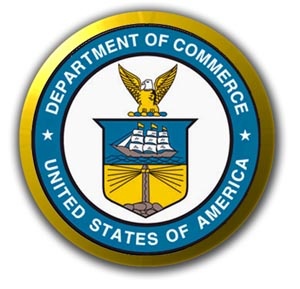 A federal lawsuit moved the U.S. Department of Commerce to hand over thousands of pages of withheld documents needed to write a book, the lawyer of an environmental activist and author said Thursday. Writer, fisherman and environmental activist Alan Stein sued the Commerce Department under the Freedom of Information and Administrative Procedures Acts in July 2015. He claimed the department and two of its agencies — the National Oceanic and Atmospheric Administration and the Office of the Inspector General — had stonewalled his requests for documents he needed for a book he was writing. Last year, Stein told Courthouse News (click here) the planned book required materials from an investigation of Arne Fuglvog, a former fishing vessel operator and fisheries official who spent time in prison for making false statements in fishing quota reports. Read the rest here 08:12 Read The NOAA Oversight Project – Fisherman’s FOIA’s Squeeze NOAA, to see the that James Balsiger, the acting head of the National Marine Fisheries Service, was going to be replaced by fisherman/ Senate staffer Arne Fuglvog who favored catch shares or scientist Brian Rothschild who did not. Click here
A federal lawsuit moved the U.S. Department of Commerce to hand over thousands of pages of withheld documents needed to write a book, the lawyer of an environmental activist and author said Thursday. Writer, fisherman and environmental activist Alan Stein sued the Commerce Department under the Freedom of Information and Administrative Procedures Acts in July 2015. He claimed the department and two of its agencies — the National Oceanic and Atmospheric Administration and the Office of the Inspector General — had stonewalled his requests for documents he needed for a book he was writing. Last year, Stein told Courthouse News (click here) the planned book required materials from an investigation of Arne Fuglvog, a former fishing vessel operator and fisheries official who spent time in prison for making false statements in fishing quota reports. Read the rest here 08:12 Read The NOAA Oversight Project – Fisherman’s FOIA’s Squeeze NOAA, to see the that James Balsiger, the acting head of the National Marine Fisheries Service, was going to be replaced by fisherman/ Senate staffer Arne Fuglvog who favored catch shares or scientist Brian Rothschild who did not. Click here
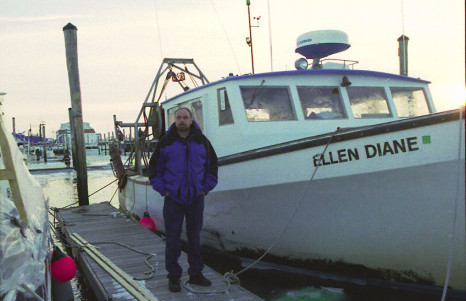
Court Rules Against Local Fishermen, Upholds Job-Killing Government Mandate
Today, the United States District Court for the District of New Hampshire dismissed the lawsuit filed by Plaintiffs David Goethel and Northeast Fishery Sector 13 against the U.S. Department of Commerce. In December 2015, the Department of Commerce ordered that fishermen who fish for cod, flounder and certain other fish in the Northeast United States not only must carry National Oceanic and Atmospheric Administration (“NOAA”) enforcement contractors known as “at-sea monitors” on their vessels during fishing trips, but must pay out-of-pocket for the cost of those monitors. This “industry funding” requirement would devastate the Northeast fishing industry, at the price of many jobs and livelihoods. The District Court’s order allows that requirement to remain in place. The Court found that the fishermen’s suit was untimely and that the requirement that monitors be funded by the fishermen was authorized by law. “I am very disappointed by this decision,” said Goethel. “I’ve made a living fishing in New England for more than 30 years, but I can’t afford to fish if I have to pay for at-sea monitors. I’m grateful to Cause of Action Institute for joining the fight, and I hope that the rule of law will win in the end.” “The fishermen in my sector can’t sustain this industry funding requirement,” said Northeast Fishery Sector 13 Manager John Haran. “They’ll have to try other fisheries, if they can keep fishing at all.” “While we respect the District Court and its decision, it appears that decision is contrary to the law and facts,” said Alfred J. Lechner, Jr., President and CEO of Cause of Action Institute and a former federal judge. “In the end, the federal government is overextending its regulatory power and is destroying an industry. We intend to study the decision and consider further action.” link 18:55

Rio History: Stingrays and Giant Mantas of the Gulf of Mexico
Yes, there are stingrays along the beaches of Padre Island …and yes, people do get stuck by them. Stingrays are actually a specialized branch-off of early sharks. They will eat almost anything they can catch, including clams, crabs and shrimp. The females are the largest, sometimes measuring six feet wide when fully mature. They are generally docile sea animals often found lying on the bottom in shallow water where they blend extremely well with their surroundings. And this is where they are most dangerous to fishermen and swimmer for they can be easily provoked if accidentally stepped on. Serrated spines and a poison gland, located near the base of the tail, can inflict a painful wound. The venom is a fairly potent nerve toxin that affects the heart and there are recorded cases of victims suffering a heart attack when stung in the chest area. According to the official autopsy, naturalist Steve Irwin’s death was caused by the trauma of the barb piercing his heart and he probably died before experiencing any effect of the ray’s poisonous venom. Does this mean all ray victims will die? No. In fact most people recover with few or any side effects. Read the rest here 18:34
Nova Scotia fishermen win back right to operate as Local 4 of Maritime Fishermen’s Union
 A Nova Scotia fishermen’s local has won a court case to get back its union accreditation. “It means we can get back to the business of representing our fishermen on fishermen issues instead of spending, as we did, almost two years battling to maintain our organization’s accreditation,” said Gordon Beaton, president of Local 4 of the Maritime Fishermen’s Union on Friday. That battle began when the province’s fisheries and aquaculture minister informed the local that its membership was too small and revoked its accreditation. The minister at the time was Queens-Shelburne MLA Sterling Belliveau. Beaton’s group represents about 45 people who fish in Region 1, which stretches from Pugwash to Cape North. That’s a small portion of the 600 or so fishermen in the region. Under the 2011 Fish Harvester Organizations Support Regulations, the local needed 100 members or 15 per cent of the fishermen in the area. However, the court found that Local 4 was accredited in 2002 under an earlier act. It was nearly 10 years later that the new legislation, with membership minimums, came into effect. It also included a grandfather provision for organizations accredited under the old legislation. Read the rest here 18:09
A Nova Scotia fishermen’s local has won a court case to get back its union accreditation. “It means we can get back to the business of representing our fishermen on fishermen issues instead of spending, as we did, almost two years battling to maintain our organization’s accreditation,” said Gordon Beaton, president of Local 4 of the Maritime Fishermen’s Union on Friday. That battle began when the province’s fisheries and aquaculture minister informed the local that its membership was too small and revoked its accreditation. The minister at the time was Queens-Shelburne MLA Sterling Belliveau. Beaton’s group represents about 45 people who fish in Region 1, which stretches from Pugwash to Cape North. That’s a small portion of the 600 or so fishermen in the region. Under the 2011 Fish Harvester Organizations Support Regulations, the local needed 100 members or 15 per cent of the fishermen in the area. However, the court found that Local 4 was accredited in 2002 under an earlier act. It was nearly 10 years later that the new legislation, with membership minimums, came into effect. It also included a grandfather provision for organizations accredited under the old legislation. Read the rest here 18:09
NOAA Determines Porbeagle Sharks Not Threatened or Endangered
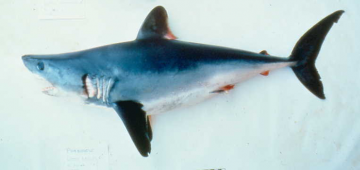 Earlier this year, we published a positive 90-day finding in response to petitions to list porbeagle sharks (Lamna nasus). A comprehensive status review, including an Extinction Risk Analysis, was completed by a group of NOAA Fisheries biologists with expertise related to porbeagle sharks. In the status review, two Distinct Population Segments of porbeagle sharks were identified – North Atlantic and Southern Hemisphere (southern Atlantic, southern Indian, southern Pacific, and Antarctic Oceans). The status review was peer reviewed by external (non-NOAA) experts. Based on the best scientific and commercial information available, including the status review report, and taking into account ongoing efforts to protect these species, we have determined that porbeagle sharks do not warrant listing at this time. Read the rest here For more information please see the Federal Register Notice 17:05
Earlier this year, we published a positive 90-day finding in response to petitions to list porbeagle sharks (Lamna nasus). A comprehensive status review, including an Extinction Risk Analysis, was completed by a group of NOAA Fisheries biologists with expertise related to porbeagle sharks. In the status review, two Distinct Population Segments of porbeagle sharks were identified – North Atlantic and Southern Hemisphere (southern Atlantic, southern Indian, southern Pacific, and Antarctic Oceans). The status review was peer reviewed by external (non-NOAA) experts. Based on the best scientific and commercial information available, including the status review report, and taking into account ongoing efforts to protect these species, we have determined that porbeagle sharks do not warrant listing at this time. Read the rest here For more information please see the Federal Register Notice 17:05
Alaska Nonprofit in Conflict with the Villagers It’s Supposed to Serve
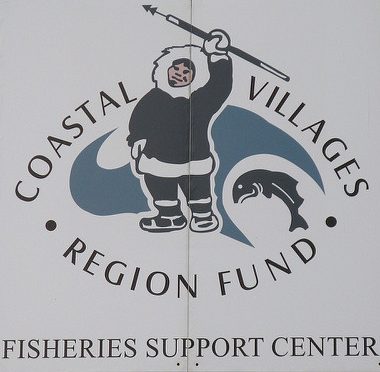 Coastal Villages Region Fund (CVRF) in Southwest Alaska is at odds with the villages it was created to serve after shutting down its commercial salmon operation. CVRF is one of six coastal development quota groups (CDQs) created by the federal government back in the Nineties to boost the Western Alaskan economy. The idea was that the CDQs would use earnings from federal fisheries, royalties, and investments to invest in the local economy by creating employment opportunities and growth, particularly surrounding small-scale commercial fisheries. They achieve this in part by offering subsidies for commercial fisheries, loans for residents to purchase boats and outboards, building or improving fish processing facilities, and improving fish handling infrastructure. Aside from commercial fishing, CDQs also create internships with business partners, offer training, and create jobs with government agencies. The CVRF board felt that one village, Quinhagak, received an unfair advantage in its subsidies for its salmon operation. They shut down the operation but still continue to offer other benefits. What the CVRF board did not anticipate was that closing this operation would have downstream effects not only on Quinhagak, but also the surrounding villages. Read the rest here 16:27
Coastal Villages Region Fund (CVRF) in Southwest Alaska is at odds with the villages it was created to serve after shutting down its commercial salmon operation. CVRF is one of six coastal development quota groups (CDQs) created by the federal government back in the Nineties to boost the Western Alaskan economy. The idea was that the CDQs would use earnings from federal fisheries, royalties, and investments to invest in the local economy by creating employment opportunities and growth, particularly surrounding small-scale commercial fisheries. They achieve this in part by offering subsidies for commercial fisheries, loans for residents to purchase boats and outboards, building or improving fish processing facilities, and improving fish handling infrastructure. Aside from commercial fishing, CDQs also create internships with business partners, offer training, and create jobs with government agencies. The CVRF board felt that one village, Quinhagak, received an unfair advantage in its subsidies for its salmon operation. They shut down the operation but still continue to offer other benefits. What the CVRF board did not anticipate was that closing this operation would have downstream effects not only on Quinhagak, but also the surrounding villages. Read the rest here 16:27
Gulf of Carpentaria trawl operators on track to cut bycatch by one third with new prawn net devices
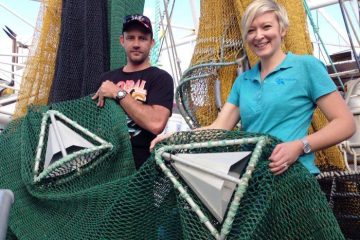 Trawler operators in the Gulf of Carpentaria believe they’re on track to achieving an ambitious target of cutting bycatch by 30 per cent in three years. The northern prawn fishery’s been offering cash incentives to promote and develop new ideas for limiting the amount of non-target species caught in prawn nets. Trawler skipper Jamie Ball admitted he was worried at first about potential prawn losses when trialling a new bycatch reduction device on board his fishing vessel, Xanadu. But after measuring and comparing catches in separate nets over a two-week period, the skipper and his crew were convinced the industry was on a winner. “I was a bit hesitant ’cause I thought ‘oh well is it losing prawn as well?” Read the story here 13:34
Trawler operators in the Gulf of Carpentaria believe they’re on track to achieving an ambitious target of cutting bycatch by 30 per cent in three years. The northern prawn fishery’s been offering cash incentives to promote and develop new ideas for limiting the amount of non-target species caught in prawn nets. Trawler skipper Jamie Ball admitted he was worried at first about potential prawn losses when trialling a new bycatch reduction device on board his fishing vessel, Xanadu. But after measuring and comparing catches in separate nets over a two-week period, the skipper and his crew were convinced the industry was on a winner. “I was a bit hesitant ’cause I thought ‘oh well is it losing prawn as well?” Read the story here 13:34
Former Fisheries Minister Hunter Tootoo evades questions about alleged sexual relationship with staff member
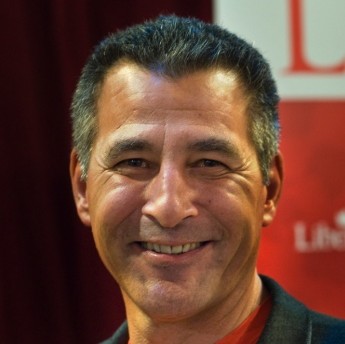 Hunter Tootoo, Nunavut MP and former fisheries minister, evaded questions this morning about allegations he had an inappropriate relationship with a female junior staff member. Tootoo abruptly resigned his cabinet post and stepped down from the Liberal caucus late in May to seek treatment for alcohol addiction. A Globe and Mail report Thursday cited anonymous sources who say Tootoo was involved in an inappropriate sexual relationship with a staff member. In an interview with Kevin Kablutsiak on CBC Nunavut’s morning show Qulliq, Tootoo did not directly address questions about the allegations. “I know that there’s lots of rumours and allegations out there,” he said. Read the rest here 13:06
Hunter Tootoo, Nunavut MP and former fisheries minister, evaded questions this morning about allegations he had an inappropriate relationship with a female junior staff member. Tootoo abruptly resigned his cabinet post and stepped down from the Liberal caucus late in May to seek treatment for alcohol addiction. A Globe and Mail report Thursday cited anonymous sources who say Tootoo was involved in an inappropriate sexual relationship with a staff member. In an interview with Kevin Kablutsiak on CBC Nunavut’s morning show Qulliq, Tootoo did not directly address questions about the allegations. “I know that there’s lots of rumours and allegations out there,” he said. Read the rest here 13:06
Stikine sockeye run is the best return in a decade
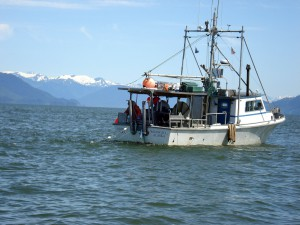 While the King salmon run for gill netters turned out to be worse than preseason estimates, the opposite holds true for sockeye. The state managed sockeye fishery began June 13. Biologists predicted a strong run but were cautious for the first few weeks to let more King salmon into the Stikine River. They limited openings to two days a week and prohibited fishing near the river’s opening. After most of the Stikine Kings passed, managers saw that the sockeye run was coming in strong. Troy Thynes is the Area Management biologist with the Alaska Department of Fish and Game based in Petersburg. “Sockeye’s are looking pretty good this year, at least locally,” Thynes said. “We’re fairly certain that we’re going to exceed preseason expectations. Especially with the Taltan River component of the run that came in really, really strong.” Stikine sockeye are shared equally between the U.S. and Canada because the river runs through both countries. It’s part of the Pacific Salmon Treaty. Canada has taken about 69,000 sockeye and U.S. fishermen 66,000. Audio, read the rest here 12:33
While the King salmon run for gill netters turned out to be worse than preseason estimates, the opposite holds true for sockeye. The state managed sockeye fishery began June 13. Biologists predicted a strong run but were cautious for the first few weeks to let more King salmon into the Stikine River. They limited openings to two days a week and prohibited fishing near the river’s opening. After most of the Stikine Kings passed, managers saw that the sockeye run was coming in strong. Troy Thynes is the Area Management biologist with the Alaska Department of Fish and Game based in Petersburg. “Sockeye’s are looking pretty good this year, at least locally,” Thynes said. “We’re fairly certain that we’re going to exceed preseason expectations. Especially with the Taltan River component of the run that came in really, really strong.” Stikine sockeye are shared equally between the U.S. and Canada because the river runs through both countries. It’s part of the Pacific Salmon Treaty. Canada has taken about 69,000 sockeye and U.S. fishermen 66,000. Audio, read the rest here 12:33
NFL Hall of Famer Warren Sapp- shark bit while lobster fishing and the photo is not for the squeamish
 I haven’t done much (translation: any) lobstering, but I’d imagine that there’s some possibility of getting pinched by one of those large claws, which sounds like it could be painful. I’d take that any day, though, over getting bitten by a shark. Warren Sapp probably would as well, but it happened to him anyway on Wednesday. The former Buccaneers star was in the act of pulling a crustacean from waters near the Florida Keys when a shark apparently decided that he looked pretty tasty in his own right. The result was a very nasty gash on Sapp’s left arm, near his elbow. The charter company he hired that day posted a photo of the gory aftermath to its Instagram page (warning: not for the squeamish). Photo’s, read the rest here 11:57
I haven’t done much (translation: any) lobstering, but I’d imagine that there’s some possibility of getting pinched by one of those large claws, which sounds like it could be painful. I’d take that any day, though, over getting bitten by a shark. Warren Sapp probably would as well, but it happened to him anyway on Wednesday. The former Buccaneers star was in the act of pulling a crustacean from waters near the Florida Keys when a shark apparently decided that he looked pretty tasty in his own right. The result was a very nasty gash on Sapp’s left arm, near his elbow. The charter company he hired that day posted a photo of the gory aftermath to its Instagram page (warning: not for the squeamish). Photo’s, read the rest here 11:57
NY officers seize undersized lobsters from Price Chopper
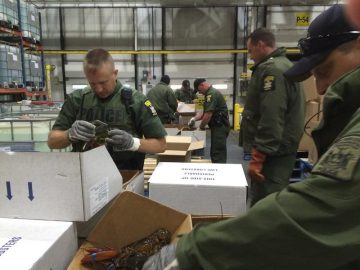 The Department of Environmental Conservation says Thursday an investigation was launched in March when officers found short lobsters at two Price Chopper stores in Binghamton. On Tuesday, officers found 820 lobsters, or 15 percent of the inventory, were undersized at the Schenectady distribution center. The retailer could be fined up to $100 for each lobster. Price Chopper spokeswoman Mona Golub said the company’s Cape Cod lobster supplier violated its product specification, and the retailer has since switched to another supplier. DEC donated the seized lobsters to the Regional Food Bank of Northeastern New York in Latham. Link 10:43
The Department of Environmental Conservation says Thursday an investigation was launched in March when officers found short lobsters at two Price Chopper stores in Binghamton. On Tuesday, officers found 820 lobsters, or 15 percent of the inventory, were undersized at the Schenectady distribution center. The retailer could be fined up to $100 for each lobster. Price Chopper spokeswoman Mona Golub said the company’s Cape Cod lobster supplier violated its product specification, and the retailer has since switched to another supplier. DEC donated the seized lobsters to the Regional Food Bank of Northeastern New York in Latham. Link 10:43
Recreational fishermen can target cod starting Monday
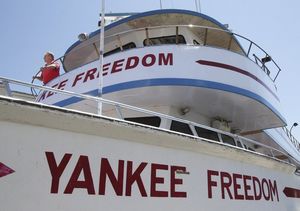 As of Monday, recreational anglers will get a chance to reacquaint themselves with the much-coveted Gulf of Maine cod when federal fishing restrictions for the species are lifted until the end of September. The bag limit for the iconic species, whose stock NOAA Fisheries maintains is in freefall, will be one cod per fisherman per day. (Anglers are mentioning the huge numbers of cod they have to throw back.) The anglers’ comments are representative of the overall narrative of local fishermen — commercial, recreational and lobstermen — who continue to insist they are seeing far more cod in the water than the scientists at NOAA Fisheries say are there. It is a disconnect that, in many ways, has come to define the plight of the commercial fishing industry and its lack of trust in the science that comes out of NOAA Fisheries. They hear one thing in the stock assessments. They see another with their eyes when they’re out on the water. Read the story here 09:16
As of Monday, recreational anglers will get a chance to reacquaint themselves with the much-coveted Gulf of Maine cod when federal fishing restrictions for the species are lifted until the end of September. The bag limit for the iconic species, whose stock NOAA Fisheries maintains is in freefall, will be one cod per fisherman per day. (Anglers are mentioning the huge numbers of cod they have to throw back.) The anglers’ comments are representative of the overall narrative of local fishermen — commercial, recreational and lobstermen — who continue to insist they are seeing far more cod in the water than the scientists at NOAA Fisheries say are there. It is a disconnect that, in many ways, has come to define the plight of the commercial fishing industry and its lack of trust in the science that comes out of NOAA Fisheries. They hear one thing in the stock assessments. They see another with their eyes when they’re out on the water. Read the story here 09:16
New York State DEC Adopts Regulations for the Atlantic Ocean Surfclam Fishery
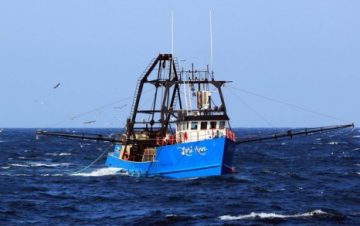 New York State Department of Environmental Conservation (DEC) Commissioner Basil Seggos today announced the adoption of regulations for the Atlantic Ocean surfclam fishery to ensure consistency with the harvest management measures of the State’s Atlantic Ocean Surfclam Fishery Management Plan (FMP). The regulations take effect immediately. “These regulations will help promote the sustainability of the surfclam fishery and economic viability of its traditional New York-based fishing interests by ensuring that the distribution of fishing quota is fair for all participants,” Commissioner Seggos said. An apparent loophole in the surfclam vessel replacement regulations has allowed one or more vessels to catch more than one IFQ in a year. This regulation closes this regulatory loophole that has allowed multiple individual fishing quotas to be fished by one or more vessels which has negatively impacted fishing businesses with vessels limited to one individual fishing quota. Read the rest here 08:24
New York State Department of Environmental Conservation (DEC) Commissioner Basil Seggos today announced the adoption of regulations for the Atlantic Ocean surfclam fishery to ensure consistency with the harvest management measures of the State’s Atlantic Ocean Surfclam Fishery Management Plan (FMP). The regulations take effect immediately. “These regulations will help promote the sustainability of the surfclam fishery and economic viability of its traditional New York-based fishing interests by ensuring that the distribution of fishing quota is fair for all participants,” Commissioner Seggos said. An apparent loophole in the surfclam vessel replacement regulations has allowed one or more vessels to catch more than one IFQ in a year. This regulation closes this regulatory loophole that has allowed multiple individual fishing quotas to be fished by one or more vessels which has negatively impacted fishing businesses with vessels limited to one individual fishing quota. Read the rest here 08:24
An optimistic outlook for fall lobster fishery in LFA 25
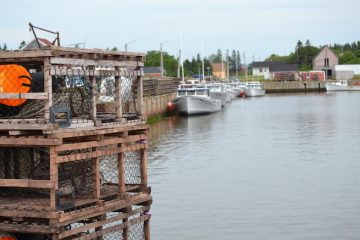 The president of the P.E.I. Fishermen’s Association thinks the way the spring lobster fishery finished off bodes well for the fall fishery which is due to open Aug. 9. “There is really heavy, heavy demand,” Craig Avery noted. Avery, who fishes spring lobster out of Northport, saw prices start off at $5.25 and $5.75 a pound for canners and markets respectively. By the end of the season he was getting $7.75 across the board while some buyers to the eastern end of the province were paying $8.00 a pound for canners and $8.25 a pound for markets. “I don’t see any reason why the price shouldn’t stay the same as where it finished this spring,” Avery commented. He pointed out the Lobster Fishing Area 25 is pretty well “the only show in Canada,” when it comes to fall lobster. Read the story here 20:09
The president of the P.E.I. Fishermen’s Association thinks the way the spring lobster fishery finished off bodes well for the fall fishery which is due to open Aug. 9. “There is really heavy, heavy demand,” Craig Avery noted. Avery, who fishes spring lobster out of Northport, saw prices start off at $5.25 and $5.75 a pound for canners and markets respectively. By the end of the season he was getting $7.75 across the board while some buyers to the eastern end of the province were paying $8.00 a pound for canners and $8.25 a pound for markets. “I don’t see any reason why the price shouldn’t stay the same as where it finished this spring,” Avery commented. He pointed out the Lobster Fishing Area 25 is pretty well “the only show in Canada,” when it comes to fall lobster. Read the story here 20:09






